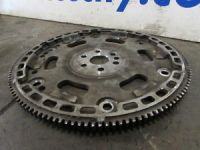I got S-Max from 2009 with a bang on the engine. The previous owner claimed that this is a knock, so I assumed a replacement engine, but in my opinion it knocks more top / side.
For now, I checked the timing (belt and chain) and they are ok. I'm starting to suspect the piston pin or the connecting rod head, so it makes sense to save this engine.
I will try in the near future to check the clearance from the bottom of the engine and oil if there are particles, but I am thinking about the cause of damage if it is a head.
The car is about 160,000 km (certain) and has been serviced by an authorized service station. No money was spared. You can see that nothing was buried in the engine, the oil was changed, the fluid could not be seen as a doorway. And no interference or reasons can be seen.
Normally, I have seen such things in worn or overheated engines, but it does not seem that the engine meets these criteria.
Have you seen such damage arising from material defects and do you have any way to verify this?
Link to the video below. Unfortunately, I forgot to overdo it
https://youtu.be/Mwr7Vz2dfj8
For now, I checked the timing (belt and chain) and they are ok. I'm starting to suspect the piston pin or the connecting rod head, so it makes sense to save this engine.
I will try in the near future to check the clearance from the bottom of the engine and oil if there are particles, but I am thinking about the cause of damage if it is a head.
The car is about 160,000 km (certain) and has been serviced by an authorized service station. No money was spared. You can see that nothing was buried in the engine, the oil was changed, the fluid could not be seen as a doorway. And no interference or reasons can be seen.
Normally, I have seen such things in worn or overheated engines, but it does not seem that the engine meets these criteria.
Have you seen such damage arising from material defects and do you have any way to verify this?
Link to the video below. Unfortunately, I forgot to overdo it
https://youtu.be/Mwr7Vz2dfj8



